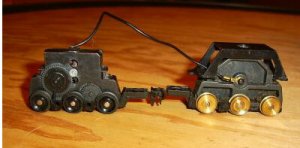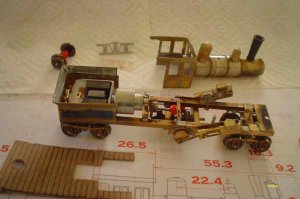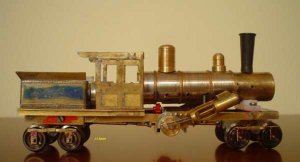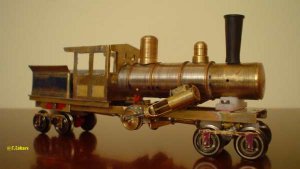I'm building a Climax out of some junk bits I resurrected. So basically, there are two trucks. One is powered and the other is a dummy that basically picks up power from the other rail. So when I build these into the engine, should the powered truck push the dummy or pull it? For best performance, you understand. For all I know, there is no difference but there just might be. Can anyone shed some light on this for me?
Scratching his head,
TrainClown
P.S. Here is a pic of the trucks:
Scratching his head,
TrainClown
P.S. Here is a pic of the trucks:






